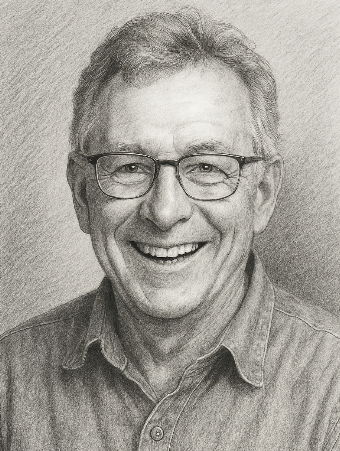Within a few days you will probably begin to notice some remarkable changes in your body. Your sense of smell and taste may improve. You will breathe easier, and your smoker’s hack will begin to disappear, although you may notice that you will continue to cough for a while. And you will be free from the mess, smell, inconvenience, expense, and dependence of cigarette smoking.
It is important to understand that the long range after-effects of quitting are only temporary and signal the beginning of a healthier life. Now that you’ve quit, you’ve added a number of healthy productive days to each year of your life. Most important, you’ve greatly improved your chances for a longer life. You have significantly reduced your risk of death from heart disease, stroke, chronic bronchitis, emphysema, and several kinds of cancer not just lung cancer.
Cigarette smoking is responsible every year for approximately 130,000 deaths from cancer, 170,000 deaths from heart disease, and 50,000 deaths from lung disease.
20 minutes
– Blood pressure drops to normal
– Pulse rate drops to normal
– Body temperature of hands and feet increases to normal
8 hours
– Carbon monoxide level in blood drops to normal
– Oxygen level in blood increases to normal
24 hours
– Chance of heart attack decreases
48 hours
– Nerve endings start regrowing
– Ability to smell and taste is enhanced
2 weeks to 3 months
– Circulation improves
– Walking becomes easier
– Lung function increases up to 30%
1 to 9 months
– Coughing, sinus congestion, fatigue, and shortness of breath decrease
– Cilia regrows in lungs, increasing ability to handle mucus, clean the lungs, and reduce infection
– Body’s overall energy increases
1 year
– Excess risk of coronary heart disease is half that of a smoker
5 years
– Lung cancer death rate for average smoker (one pack a day) decreases by almost half
– Stroke risk is reduced to that of a nonsmoker 5-15 years after quitting
– Risk of cancer of the mouth, throat and esophagus is half that of a smoker’s
10 years
– Lung cancer death rate similar to that of nonsmokers
– Precancerous cells are replaced
– Risk of cancer of the mouth, throat, esophagus, bladder, kidney and pancreas decreases
15 years
Risk of coronary heart disease is that of a nonsmoker
We recently returned from a walking trip in Spain along the Camino de Santiago. Although the trek is about 800 kilometers, we walked only the last 220 kilometers and met some wonderful people along the way. We spent one pleasant evening chatting to a plastic surgeon and a retired banker who were biking across the Camino (no small thing – trust me walking is easier). As is the custom when meeting people in their own homeland, our talk turned to healthcare in Spain. Both were bemoaning what they felt was a growing problem in Spain: obesity.
Although it didn’t appear as bad to us as it is in the U.S., obesity is clearly on the rise in the world, a problem that I’ve recently heard referred to as the “industrial global diet” high in meat, fat and sugar. In other words it’s cheap food. High in calories. Terrible to one’s health.
Italy, the home of the Mediterranean Diet, also has an obesity problem, more the result of rising wealth than worsening poverty as more of the population adopts the industrial diet.
According to Dr. Angelo Pietrobelli, associate professor of pediatrics and nutrition at the University of Verona, “Unfortunately, in particular among adolescents, they try to avoid Mediterranean diet because they try to ‘imitate’ the U.S. diet.”
During the 1940s, physiologist Ancel Keys, noted that the people of the seaside town of Pioppi, were living longer, healthier lives and had a much lower rate of heart disease than their well-fed Northern European counterparts. He ended up studying their diet during the 1940s and ‘50s and the Mediterranean Diet, high in fresh vegetables, fruit and fish and low in meat, was introduced to the rest of the world. Keys himself adopted the diet and died at 101 years of age.
The problem was that the Mediterranean diet was actually a poor man’s diet, “a diet of poverty, not of choice” according to food historian Zachary Nowak of the Umbra Institute of Perugia.
Obesity is not confined to Italy where about 36% of kids aged 12-16 are overweight or obese, but is spreading to Greece as well as Spain where more young people are abandoning the Mediterranean diet in favor of fast food joints.
Too bad this is what kids want to emulate about Americans.
Andrea was a 32 year old professional woman who was referred to me by her primary physician. She had back surgery one year ago to free up a restricted nerve which was causing her a lot of discomfort. Her surgery was successful although she continued to have pain. Although her pain was less than before but she said it still interfered with her sleep and limited her extremely active lifestyle.
Andrea described her job as constant motion; she was a sales rep and did a lot of traveling and was on call 24/7. The financial rewards were enormous but over the last few years she liked it less. Further into our initial conversation I learned that Andrea was brought up in an athletic family; her father was a high school track coach who instilled his militaristic views on fitness to his family. When she wasn’t working she was a long distance competitive runner. In addition to all of this stress, she recently went through a divorce.
We talked a lot about her lifestyle, the surgery and how things are marginally better now compared to before surgery. I then asked her if she was happy. She didn’t understand what that would have to do with the pain so I explained that what we think about most on a day-to-day basis has a significant affect on how we feel physically, emotionally and even the types of situations we attract into our lives. I also added that apparently there was a physical component to her pain which surgery seemed to improve but that there also could be an emotional component still in need of attention.
I told her about a sixteen year old boy, Jeff (not his real name), who had come to me for IBS. He was not progressing as well as I thought he should, so during a session I asked him to look forward in time and see himself free of IBS, after the session he said he couldn’t envision such a scenario. He said everyone knew him as the kid battling IBS. He said it was part of who he was.
In a subsequent session in which we dialoged back and forth I asked him if the healthy Jeff would be able to help the IBS Jeff through this transition, to which he agreed. I then asked IBS Jeff if he thought it was a good idea to take a rest and let healthy Jeff lead the way, which also got a positive response. This is called parts therapy and can be an extremely powerful tool to free up inner conflict creating resolution, freedom and relief. After this session Jeff quickly began experience relief from his IBS symptoms.
Andrea was intrigued and excited to pursue hypnosis. In her first session I helped her learn how to deeply relax and to also stimulate the flow of endorphins which can be extremely comforting. When she came back in two weeks for her next session she was smiling and experiencing some relief but still had some discomfort. She agreed to try dialoging during this session as had I described doing with Jeff.
In hypnosis, I asked Andrea what she thought the source of her remaining discomfort might and she was quick to respond. She said she hated her job and always had. Her father had a sales job and he pushed her into doing the same. She also hated running and maintaining her family’s ridiculous fitness standards. I asked her what changes she might make that could help her with her discomfort and she said her first move was to search out a job that she was passionate about and also starting to listen to her body more rather than punishing it with endless exercise. She also said that because hypnosis has brought her such clarity she would continue practicing self-hypnosis.
At the conclusion of the session Andrea was very emotional. She had been driven for so long by values she couldn’t live with and to experience such immediate and complete freedom from the weight of such a burden can be an amazing experience. So many times I see clients who think they know what their problem is only to learn it was something completely different.
Andrea came back for a couple of more visits. Her pain was gone and she was excited about her future. She, of course, still wasn’t sure what path she might take but she certainly knew that positive healthy change was coming and was very open to consider all possibilities.
By: Paul Gustafson RN CH
The International Food Information Council (IFIC) Foundation just released the results of their 2012 Food & Health Survey. Their findings show Americans knowledge on nutrition is a bit of a contradiction. While people said their nutrition is important and they want to make improvements, they also said they are unsure of what to eat to stay healthy and maintain a healthy weight.
The findings also found men and women flip-flop when it comes to eating healthy and exercise.
Men find it harder to eat right than exercise, while the opposite is true for women. Another interesting finding saw 87 percent pointing to taste as the most important factor in the food they choose, with price as the second determination.
The worst statistic of all, less than 10% could correctly estimate the number of calories they need to maintain their and only three in 10 believe all sources of calories play a role in weight gain. Multiple studies have found calories are the principle cause of weight gain and the premise of this site is to help people stay informed. Spread the word, it’s sad to know so many want to lose weight, are trying hard to, but are simply misinformed.
Caloriecount.com
Descriptions of the hypnotic process going back 6000 years. During the past 200 years, hypnosis became more formalized but had to battle for mainstream acceptance against organized religion and medical science.
Here is a time line listing of some of the most significant leader in the field involved in the advancement of hypnosis as a legitimate adjunct modality:
Franz Anton Mesmer (1734-1815) The Austrian physician is commonly referred to as the father of Hypnosis. His technique at the time was called animal magnetism which he claimed involved the individual’s psychic and electromagnetic energies.
Even though his work was shunned by the medical community at the time, it was Mesmer who was responsible for spreading the word of the soon to be called hypnosis to the newly settled United States. Now you know where the term ‘to become mesmerized’ originated.
In 1784 the French Academy of Sciences led by Benjamin Franklin were commissioned to evaluate Mesmer. They concluded that he was not the one doing the healing but that his patients were self-healing. They said that the patient’s imagination was enhanced with Mesmer’s technique empowering them to become completely self-healed.
On the surface it seemed that Mesmer was labeled a failure. Actually, the commission proved what we have all come to learn about the true nature of hypnosis; all hypnosis is self-hypnosis. As a hypnotist, I not only teach individuals to independently descend to a powerful level of thought but I also supply them with positive words, images and metaphors.
The result is new patterns, values and beliefs supporting the client’s goals. True power always resides within the client; the hypnotist is merely the facilitator.
James Braid (1795-1860) was an English physician who coined the name ‘hypnosis’ which is a Greek derivative for sleep. Braid soon realized that hypnosis was not sleep at all and unsuccessfully tried to change the name to ‘monoeidism’.
James EsDaile (1805-1859) was the surgeon who successfully performed 345 major operations using only hypnosis as the anesthetic. Soon after his dramatic research was published ether was discovered replacing the need for hypno-anesthesia.
Jean Martin Charcot (1825 –1893) was a French neurologist who labeled the three stages of hypnosis as lethargy, catalepsy and somnambulism.
Pierre Janet (1845-1947) was a French neurologist who advanced the use of hypnosis for the therapeutic value of relaxation and healing. He was in the minority of those who used hypnosis during the growing popularity of psychoanalytic therapy.
Sigmund Freud (1856-1939) claimed to not prefer hypnosis because he thought he couldn’t hypnotize patients deep enough but it was also commonly known that he was just not that good at it. Freud’s shunning of hypnosis slowed its acceptance by the medical community.
Milton Erickson (1932-1974) was an Arizona psychiatrist who is commonly referred to as the father of modern hypnosis. He was the master of indirect hypnotic suggestion. He played a significant role in the 1958 acceptance of hypnosis by the American Medical Association.
By: Paul Gustafson RN CH








